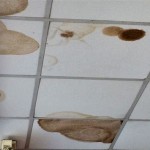How to Clean a Delta Bathroom Faucet
Delta bathroom faucets are known for their durability and stylish designs, but like all plumbing fixtures, they accumulate mineral deposits, soap scum, and grime over time. Regular cleaning is essential to maintain their appearance, functionality, and longevity. This article provides a comprehensive guide on how to effectively clean a Delta bathroom faucet, addressing various cleaning methods and preventive measures.
The frequency of cleaning depends on water quality and usage. Areas with hard water will experience faster mineral buildup, requiring more frequent attention. A weekly wipe-down can prevent significant accumulation, while a deeper clean may be necessary every month or two, depending on the level of residue.
Before commencing any cleaning procedure, it is crucial to identify the faucet's finish. Delta faucets are available in various finishes, including chrome, stainless steel, bronze, and matte black. Using the wrong cleaning products can damage or discolor the finish, permanently affecting the faucet's appearance. Consult the manufacturer's care instructions for specific recommendations related to the finish of your particular faucet model.
Gathering Essential Cleaning Supplies
Having the right tools and solutions readily available streamlines the cleaning process and ensures effective results. The following items are generally required:
*Soft Cloths or Microfiber Towels:
These are essential for wiping down surfaces without scratching the finish. Microfiber cloths are particularly effective at lifting dirt and grime. *Soft-Bristled Brush:
An old toothbrush or a specialized faucet cleaning brush is useful for scrubbing hard-to-reach areas and crevices. *White Vinegar:
A natural and effective cleaning agent for dissolving mineral deposits and soap scum. *Mild Dish Soap:
A gentle cleanser for removing grease and grime without damaging the finish. *Warm Water:
Used for rinsing and diluting cleaning solutions. *Spray Bottle (Optional):
For applying cleaning solutions evenly. *Baking Soda (Optional):
For tackling stubborn stains and grime. *Non-Abrasive Cleaner (Optional):
Specifically formulated for faucet finishes, if desired. Always test in an inconspicuous area first. *Plumber's Tape (Optional):
May be needed if removing and reinstalling components. *Wrench or Pliers (Optional):
For disassembling parts of the faucet, if needed for a deep clean. *Safety Glasses (Optional):
For protecting eyes when working with cleaning solutions. *Gloves (Optional):
For protecting hands from cleaning solutions and potential grime.Basic Cleaning Procedure for Most Delta Bathroom Faucets
This method is suitable for routine cleaning and removing light buildup. It is a relatively gentle approach that minimizes the risk of damaging the faucet finish.
First, dampen a soft cloth with warm water and wipe down the entire faucet surface to remove loose dirt and debris. Next, prepare a mild cleaning solution by mixing a few drops of dish soap with warm water in a bowl or spray bottle. Apply the solution to the faucet using a soft cloth or spray bottle, ensuring all areas are covered. Allow the solution to sit for a few minutes to loosen any remaining grime.
Use a soft-bristled brush, such as an old toothbrush, to gently scrub around the base of the faucet, the handle, and any other areas where buildup is visible. Avoid applying excessive pressure that could scratch the finish. Rinse the faucet thoroughly with clean warm water to remove all traces of the cleaning solution. Finally, dry the faucet completely with a clean, dry microfiber cloth. This step is crucial to prevent water spots and streaks from forming.
For stubborn water spots, a solution of equal parts white vinegar and water can be effective. Apply the solution to the affected areas and let it sit for a few minutes before rinsing and drying. If the water spots persist, repeat the process or try a more concentrated vinegar solution. However, prolonged exposure to vinegar can damage certain finishes, so it is important to monitor the area carefully and rinse thoroughly.
Addressing Stubborn Stains and Mineral Deposits
When dealing with significant mineral deposits or stubborn stains, a more aggressive cleaning approach may be necessary. This method involves using stronger cleaning agents and more intensive scrubbing.
One effective method for removing mineral deposits involves using white vinegar. Soak a cloth or paper towel in white vinegar and wrap it around the affected area. Allow the vinegar to sit for several hours, or even overnight, to dissolve the mineral buildup. The duration of soaking depends on the severity of the deposits. Check the area periodically to ensure the vinegar is not damaging the finish. After soaking, remove the cloth and scrub the area gently with a soft-bristled brush. Rinse thoroughly with clean water and dry with a microfiber cloth.
Another option for tackling stubborn stains is to use a paste made from baking soda and water. Mix baking soda with enough water to form a thick paste. Apply the paste to the stained area and let it sit for a few minutes. Gently scrub the area with a soft cloth or brush. Baking soda is a mild abrasive, so avoid using excessive pressure. Rinse thoroughly with clean water and dry with a microfiber cloth. Baking soda can be particularly effective for removing soap scum and hard water stains.
For extremely persistent stains, a commercially available non-abrasive cleaner specifically designed for faucet finishes may be used. Always test the cleaner in an inconspicuous area first to ensure it does not damage or discolor the finish. Follow the manufacturer's instructions carefully when using any commercial cleaner.
Cleaning the Aerator
The aerator is a small screen located at the tip of the faucet that mixes air with the water stream. Over time, the aerator can become clogged with mineral deposits and debris, reducing water flow and affecting water pressure. Cleaning the aerator is an essential part of maintaining the faucet's performance.
To clean the aerator, first, locate it at the end of the faucet spout. Most aerators can be unscrewed by hand or with a pair of pliers. Be careful not to scratch the finish when using pliers. Wrap the aerator with a cloth before using the pliers to protect it. Once the aerator is removed, disassemble it into its component parts, typically including a screen, a rubber washer, and a housing.
Rinse each component thoroughly under running water to remove loose debris. Use a soft-bristled brush to scrub away any remaining buildup. For stubborn mineral deposits, soak the components in white vinegar for several hours or overnight. After soaking, scrub the components again and rinse thoroughly. Reassemble the aerator and screw it back onto the faucet spout. Ensure it is securely tightened but not overtightened to avoid damaging the threads.
After cleaning the aerator, turn on the faucet and check the water flow. If the water pressure is still low, the aerator may need to be replaced. Replacement aerators are readily available at most hardware stores.
Preventive Measures to Extend Cleaning Intervals
Implementing preventive measures can significantly reduce the frequency of cleaning and maintain the faucet's appearance for a longer period. These measures are straightforward to implement and require minimal effort.
One effective preventive measure is to wipe down the faucet with a clean, dry cloth after each use. This helps to remove water droplets and prevent water spots from forming. Regularly wiping down the faucet also prevents soap scum and other residues from accumulating on the surface.
Consider installing a water softener if your home has hard water. Water softeners remove minerals from the water, reducing the formation of mineral deposits on faucets and other plumbing fixtures. Although the initial investment for a water softener can be significant, it can save money in the long run by reducing the need for frequent cleaning and repairs.
Avoid using abrasive cleaners or scouring pads on the faucet surface. Abrasive cleaners can scratch the finish and dull the faucet's appearance. Always use soft cloths and gentle cleaning solutions. When cleaning the surrounding countertop, protect the faucet from splashes of harsh cleaning chemicals. These chemicals can damage the faucet finish.
By following these cleaning procedures and preventive measures, a Delta bathroom faucet can be maintained in optimal condition for years to come. Regular cleaning not only enhances the faucet's appearance but also ensures its continued functionality and longevity.

Faucet Aerators Here S What You Should Know Before Installing One

How To Tighten Faucet Handle Homeserve Usa

Faucets High Or Low Profile Yay Nay Which Is Your Favourite

Delta Downing Single Handle Centerset Bathroom Faucet Metal 4 In Black Matte 15779lf Bl Rona

Delta Greydon Single Handle 5 Spray Tub And Shower Faucet In Spotshield Brushed Nickel Valve Included 144860 Sp The Home Depot

Delta Downing Single Handle 4 In Centerset Nickel Bathroom Faucet 15779lf Sp Rona

Bowery Bathroom Collection
Delta Principals Two Handle Widespread Bathroom Faucet Costco

Delta 1 Handle Matte Black Pull Down Kitchen Faucet With Single 981lf Bl Rona

Delta Pierce Single Hole Handle Lever Bathroom Sink Faucet Standard Flow Deck Mount The Home Depot
Related Posts







